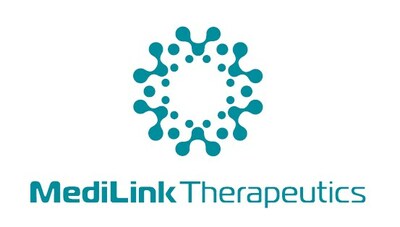SUZHOU, China, Oct. 7, 2024 /PRNewswire/ -- MediLink Therapeutics (Suzhou) Co., Ltd. (“MediLink”), a clinical-stage biotech company, today announced a global clinical trial collaboration and supply agreement with Amgen Inc. Amgen will lead a global clinical study to evaluate the therapeutic potential of the combination of MediLink’s B7-H3-targeting antibody-drug conjugate (ADC) YL201 and Amgen’s DLL3- and CD3-targeting bispecific T-cell engager (BiTE®) IMDELLTRA™ in extensive-stage small cell lung cancer (ES-SCLC) under the clinical trial collaboration and supply agreement. MediLink will provide the investigational drug YL201 for the combination study.
This open-label, global, multi-center Phase Ib clinical study is designed to evaluate the safety, tolerability, pharmacokinetics, and efficacy of this combination regimen in ES-SCLC patients.
Both YL201 and IMDELLTRA™ have shown potential in ES-SCLC. In May of this year, IMDELLTRA™ received accelerated approval from the FDA and is currently marketed in the US for the treatment of adult patients with ES-SCLC with disease progression on or after platinum-based chemotherapy. This indication is approved under accelerated approval based on overall response rate and duration of response. Continued approval for this indication may be contingent upon verification and description of clinical benefit in a confirmatory trial(s). The efficacy of YL201 monotherapy is encouraging in ES-SCLC. MediLink has announced the data of a Phase I/II clinical trial of YL201 in patients with advanced solid tumors including SCLC as a selected oral presentation at the ESMO Congress 2024. This clinical trial collaboration aims to explore the potential of the two innovative drugs in the treatment of ES-SCLC and offer a novel and synergetic mechanism of action for clinical benefit.
About ES-SCLC
SCLC is an aggressive high-grade neuroendocrine carcinoma with extremely poor outcomes [1]. SCLC comprises roughly 15% (~0.36 million new cases) of the 2.4 million new lung cancer cases worldwide each year [2].
Approximately two-thirds of patients with SCLC present with extensive-stage (ES) disease at diagnosis, featuring tumors with distant metastasis or exceeding an area that can be treated within a single radiation field [3-5]. Patients with ES-SCLC, compared with patients with limited-stage (LS-SCLC), manifested with worse prognosis as the median expected overall survival is ~12 months following initial therapy and a 5-year overall survival rate of 3% [6-8].
About YL201
YL201 is an innovative ADC that specifically targets B7-H3. B7-H3 is overexpressed on different malignant cells and cancer-initiating cells of various tumor types, but has a restricted expression in normal tissue [9], indicating its potential as an ADC drug target. YL201 has been developed by utilizing MediLink’s Tumor Microenvironment Activable LINker-payload (TMALIN®) conjugated with a highly specific B7-H3 antibody. Currently, YL201 is being investigated in four Phase I or II studies, including one global Phase I clinical study.
About IMDELLTRA™
IMDELLTRA™ is a first-in-class, targeted immunotherapy engineered by Amgen researchers that binds to both DLL3 on tumor cells and CD3 on T cells, activating T cells to kill DLL3-expressing SCLC cells. This results in the formation of a cytolytic synapse with lysis of the cancer cell [10-11]. DLL3 is a protein that is expressed on the surface of SCLC cells in ~85-96% of patients with SCLC, but is minimally expressed on healthy cells, making it an exciting target [12-13].
IMPORTANT SAFETY INFORMATION
WARNING: CYTOKINE RELEASE SYNDROME AND NEUROLOGIC TOXICITY including IMMUNE EFFECTOR CELL-ASSOCIATED NEUROTOXICITY SYNDROME
- Cytokine release syndrome (CRS), including serious or life-threatening reactions, can occur in patients receiving IMDELLTRATM. Initiate treatment with IMDELLTRATM using the step-up dosing schedule to reduce the incidence and severity of CRS. Withhold IMDELLTRATM until CRS resolves or permanently discontinue based on severity.
- Neurologic toxicity, including immune effector cell-associated neurotoxicity syndrome (ICANS), including serious or life-threatening reactions, can occur in patients receiving IMDELLTRATM. Monitor patients for signs and symptoms of neurologic toxicity, including ICANS, during treatment and treat promptly. Withhold IMDELLTRATM until ICANS resolves or permanently discontinue based on severity.
WARNINGS AND PRECAUTIONS
- Cytokine Release Syndrome (CRS): IMDELLTRATM can cause CRS including serious or life-threatening reactions. In the pooled safety population, CRS occurred in 55% of patients who received IMDELLTRATM, including 34% Grade 1, 19% Grade 2, 1.1% Grade 3 and 0.5% Grade 4. Recurrent CRS occurred in 24% of patients, including 18% Grade 1 and 6% Grade 2.
Most events (43%) of CRS occurred after the first dose, with 29% of patients experiencing any grade CRS after the second dose and 9% of patients experiencing CRS following the third dose or later. Following the Day 1, Day 8, and Day 15 infusions, 16%, 4.3% and 2.1% of patients experienced ≥ Grade 2 CRS, respectively. The median time to onset of all grade CRS from most recent dose of IMDELLTRATM was 13.5 hours (range 1 to 268 hours). The median time to onset of ≥ Grade 2 CRS from most recent dose of IMDELLTRATM was 14.6 hours (range: 2 to 566 hours).
Clinical signs and symptoms of CRS included pyrexia, hypotension, fatigue, tachycardia, headache, hypoxia, nausea, and vomiting. Potentially life-threatening complications of CRS may include cardiac dysfunction, acute respiratory distress syndrome, neurologic toxicity, renal and/or hepatic failure, and disseminated intravascular coagulation (DIC).
Administer IMDELLTRATM following the recommended step-up dosing and administer concomitant medications before and after Cycle 1 IMDELLTRATM infusions as described in Table 3 of the Prescribing Information (PI) to reduce the risk of CRS. Administer IMDELLTRATM in an appropriate health care facility equipped to monitor and manage CRS. Ensure patients are well hydrated prior to administration of IMDELLTRATM.
Closely monitor patients for signs and symptoms of CRS during treatment with IMDELLTRATM. At the first sign of CRS, immediately discontinue IMDELLTRATM infusion, evaluate the patient for hospitalization and institute supportive care based on severity. Withhold or permanently discontinue IMDELLTRATM based on severity. Counsel patients to seek medical attention should signs or symptoms of CRS occur.
- Neurologic Toxicity, Including ICANS: IMDELLTRATM can cause serious or life-threatening neurologic toxicity, including ICANS. In the pooled safety population, neurologic toxicity, including ICANS, occurred in 47% of patients who received IMDELLTRATM, including 10% Grade 3. The most frequent neurologic toxicities were headache (14%), peripheral neuropathy (7%), dizziness (7%), insomnia (6%), muscular weakness (3.7%), delirium (2.1%), syncope (1.6%), and neurotoxicity (1.1%).
ICANS occurred in 9% of IMDELLTRATM-treated patients. Recurrent ICANS occurred in 1.6% of patients. Most patients experienced ICANS following Cycle 2 Day 1 (24%). Following Day 1, Day 8, and Day 15 infusions, 0.5%, 0.5% and 3.7% of patients experienced ≥ Grade 2 ICANS, respectively. The median time to onset of ICANS from the first dose of IMDELLTRATM was 29.5 days (range: 1 to 154 days). ICANS can occur several weeks following administration of IMDELLTRATM. The median time to resolution of ICANS was 33 days (range 1 to 93 days).
The onset of ICANS can be concurrent with CRS, following resolution of CRS, or in the absence of CRS. Clinical signs and symptoms of ICANS may include but are not limited to confusional state, depressed level of consciousness, disorientation, somnolence, lethargy, and bradyphrenia.
Patients receiving IMDELLTRATM are at risk of neurologic adverse reactions and ICANS resulting in depressed level of consciousness. Advise patients to refrain from driving and engaging in hazardous occupations or activities, such as operating heavy or potentially dangerous machinery, in the event of any neurologic symptoms until they resolve.
Closely monitor patients for signs and symptoms of neurologic toxicity and ICANS during treatment. At the first sign of ICANS, immediately evaluate the patient and provide supportive therapy based on severity. Withhold IMDELLTRATM or permanently discontinue based on severity.
- Cytopenias: IMDELLTRATM can cause cytopenias including neutropenia, thrombocytopenia, and anemia. In the pooled safety population, decreased neutrophils occurred in 12% including 6% Grade 3 or 4 of IMDELLTRATM-treated patients. The median time to onset for Grade 3 or 4 neutropenia was 29.5 days (range: 2 to 213). Decreased platelets occurred in 33% including 3.2% Grade 3 or 4. The median time to onset for Grade 3 or 4 decreased platelets was 50 days (range: 3 to 420). Decreased hemoglobin occurred in 58% including 5% Grade 3 or 4. Febrile neutropenia occurred in 0.5% of patients treated with IMDELLTRATM.
Monitor patients for signs and symptoms of cytopenias. Perform complete blood counts prior to treatment with IMDELLTRATM, before each dose, and as clinically indicated. Based on the severity of cytopenias, temporarily withhold, or permanently discontinue IMDELLTRATM.
- Infections: IMDELLTRATM can cause serious infections, including life-threatening and fatal infections. In the pooled safety population, infections, including opportunistic infections, occurred in 41% of patients who received IMDELLTRATM. Grade 3 or 4 infections occurred in 13% of patients. The most frequent infections were COVID-19 (9%, majority during the COVID-19 pandemic), urinary tract infection (10%), pneumonia (9%), respiratory tract infection (3.2%), and candida infection (3.2%).
Monitor patients for signs and symptoms of infection prior to and during treatment with IMDELLTRATM and treat as clinically indicated. Withhold or permanently discontinue IMDELLTRATM based on severity.
- Hepatotoxicity: IMDELLTRATM can cause hepatotoxicity. In the pooled safety population, elevated ALT occurred in 42%, with Grade 3 or 4 ALT elevation occurring in 2.1%. Elevated AST occurred in 44% of patients, with Grade 3 or 4 AST elevation occurring in 3.2%. Elevated bilirubin occurred in 15% of patients; Grade 3 or 4 total bilirubin elevations occurred in 1.6% of patients. Liver enzyme elevation can occur with or without concurrent CRS. Monitor liver enzymes and bilirubin prior to treatment with IMDELLTRATM, before each dose, and as clinically indicated. Withhold IMDELLTRATM or permanently discontinue based on severity.
- Hypersensitivity: IMDELLTRATM can cause severe hypersensitivity reactions. Clinical signs and symptoms of hypersensitivity may include, but are not limited to, rash and bronchospasm. Monitor patients for signs and symptoms of hypersensitivity during treatment with IMDELLTRATM and manage as clinically indicated. Withhold or consider permanent discontinuation of IMDELLTRATM based on severity.
- Embryo-Fetal Toxicity: Based on its mechanism of action, IMDELLTRATM may cause fetal harm when administered to a pregnant woman. Advise patients of the potential risk to a fetus. Advise females of reproductive potential to use effective contraception during treatment with IMDELLTRATM and for 2 months after the last dose.
ADVERSE REACTIONS
- The most common (> 20%) adverse reactions were CRS (55%), fatigue (51%), pyrexia (36%), dysgeusia (36%), decreased appetite (34%), musculoskeletal pain (30%), constipation (30%), anemia (27%) and nausea (22%). The most common (≥ 2%) Grade 3 or 4 laboratory abnormalities were decreased lymphocytes (57%), decreased sodium (16%), increased uric acid (10%), decreased total neutrophils (6%), decreased hemoglobin (5%), increased activated partial thromboplastin time (5%), decreased potassium (5%), increased aspartate aminotransferase (3.2%), decreased white blood cells (3.8%), decreased platelets (3.2%), and increased alanine aminotransferase (2.1%).
- Serious adverse reactions occurred in 58% of patients. Serious adverse reactions in > 3% of patients included CRS (24%), pneumonia (6%), pyrexia (3.7%), and hyponatremia (3.6%). Fatal adverse reactions occurred in 2.7% of patients including pneumonia (0.5%), aspiration (0.5%), pulmonary embolism (0.5%), respiratory acidosis (0.5%), and respiratory failure (0.5%).
DOSAGE AND ADMINISTRATION: Important Dosing Information
- Administer IMDELLTRATM as an intravenous infusion over one hour.
- Administer IMDELLTRATM according to the step-up dosing schedule in the IMDELLTRATM PI (Table 1) to reduce the incidence and severity of CRS.
- For Cycle 1, administer recommended concomitant medications before and after Cycle 1 IMDELLTRATM infusions to reduce the risk of CRS reactions as described in the PI (Table 3).
- IMDELLTRATM should only be administered by a qualified healthcare professional with appropriate medical support to manage severe reactions such as CRS and neurologic toxicity including ICANS.
- Due to the risk of CRS and neurologic toxicity, including ICANS, monitor patients from the start of the IMDELLTRATM infusion for 22 to 24 hours on Cycle 1 Day 1 and Cycle 1 Day 8 in an appropriate healthcare setting.
- Recommend that patients remain within 1 hour of an appropriate healthcare setting for a total of 48 hours from start of the infusion with IMDELLTRATM following Cycle 1 Day 1 and Cycle 1 Day 8 doses, accompanied by a caregiver.
- Prior to administration of IMDELLTRATM evaluate complete blood count, liver enzymes, and bilirubin before each dose, and as clinically indicated.
- Ensure patients are well hydrated prior to administration of IMDELLTRATM.
Please see IMDELLTRA™ full Prescribing Information, including BOXED WARNINGS
About MediLink Therapeutics
MediLink Therapeutics, founded in 2020, is a clinical stage biotech company dedicated to developing conjugated drugs with global competitiveness. MediLink has developed its proprietary TMALIN® ADC technology platform, enabling the generation of homogeneous ADC with high drug-antibody ratio and improved therapeutic window for the treatment of solid tumors. MediLink aims to provide improved treatment options for global patients and address unmet medical needs. The company is headquartered in Suzhou, China and has established R&D sites in Shanghai, China and Boston, US.
Reference:
1. Badin F. Considerations for selecting second-line treatment in patients with progressive small cell lung cancer and the use of Lurbinectedin in this setting. Cancer Treat Res. Commun., 2024, 39, 100803.
2. a. Oronsky B, Abrouk N, Caroen S, et al. A 2022 Update on Extensive Stage Small-Cell Lung Cancer (SCLC). J Cancer. 2022; 13, 2945-2953.
b. World Health Organization. Lung. 2020. https://gco.iarc.who.int/media/globocan/factsheets/cancers/15-trachea-bronchus-and-lung-fact-sheet.pdf. Accessed on March 15, 2024.
c. Sabari JK, Lok BH, Laird JH, et al. Unravelling the biology of SCLC: implications for therapy. Nat Rev Clin Oncol. 2017, 14, 549.
3. National Cancer Institute, Small cell lung cancer treatment (PDQ®) – health professional version, 2023. Available from: https://www.cancer.gov/types/lung/hp/small-cell-lung-treatment-pdq. Accessed 13 March 2023.
4. American Cancer Society. Lung cancer – Small cell lung cancer stages. Available from: https://www.cancer.org/cancer/lung-cancer/detection diagnosis-staging/staging-sclc.html. Accessed 13 March 2023.
5. Cancer Research UK. Limited and extensive stage (small cell lung cancer). Available from: https://www.cancerresearchuk.org/about-cancer/lung cancer/stages-types-grades/limited-extensive. Accessed 13 March 2023.
6. American Cancer Society. Lung Cancer Survival Rates. www.cancer.org/cancer/types/lung-cancer/detection-diagnosis-staging/survival-rates.html. Accessed on September 4, 2024.
7. Liu SV, Reck M, Mansfield AS, et al. Updated Overall Survival and PD-L1 Subgroup Analysis of Patients With Extensive-Stage Small-Cell Lung Cancer Treated With Atezolizumab, Carboplatin, and Etoposide (IMpower133). J Clin Oncol. 2021, 39, 619.
8. Howlader N, Noone A, Krapcho M, Miller D, Brest A, Yu M, et al. SEER Cancer Statistics Review. National Cancer Institute.
9. Kontos F, Michelakos T, Kurokawa T, Sadagopan A, Schwab JH, Ferrone CR, Ferrone S. B7-H3: An Attractive Target for Antibody-based Immunotherapy. Clin Cancer Res., 2021, 27, 1227
10. Giffin MJ, Cooke K, Lobenhofer EK, et al. AMG 757, a Half-Life Extended, DLL3-Targeted Bispecific T-Cell Engager, Shows High Potency and Sensitivity in Preclinical Models of Small-Cell Lung Cancer. Clin Cancer Res., 2021, 27, 1526.
11. Baeuerle PA, Kufer P, Bargou R. BiTE: Teaching antibodies to engage T-cells for cancer therapy. Curr Opin Mol Ther., 2009, 11, 22.
12. Ahn MJ, Cho BC, Felip E, et al. Tarlatamab for Patients with Previously Treated Small-Cell Lung Cancer. N Engl J Med., 2023, 389, 2063.
13. Rojo F, Corassa M, Mavroudis D, et al. International real-world study of DLL3 expression in patients with small cell lung cancer. Lung Cancer., 2020, 147, 237.
![]() View original content to download multimedia:https://www.prnewswire.com/news-releases/medilink-announces-global-clinical-trial-collaboration-and-supply-agreement-on-yl201-combination-therapy-302268140.html
View original content to download multimedia:https://www.prnewswire.com/news-releases/medilink-announces-global-clinical-trial-collaboration-and-supply-agreement-on-yl201-combination-therapy-302268140.html
SOURCE MediLink Therapeutics






